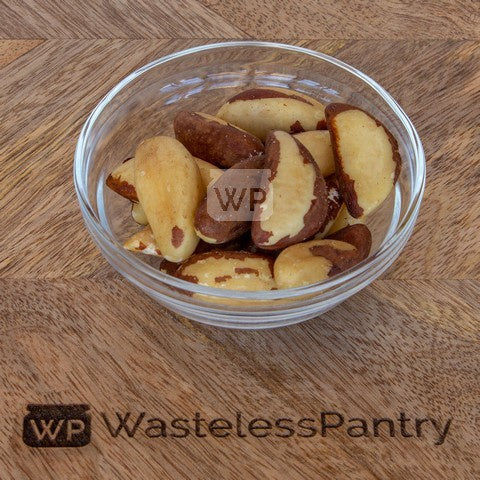How To Use Coarse Salt for Perfectly Seasoned Dishes
- Shopmundaring Wastelesspantry

- Dec 31, 2024
- 2 min read

When it comes to enhancing the flavor of your favorite dishes, not all salt is created equal. Coarse salt, with its larger, irregular crystals, is a culinary gem treasured by both professional chefs and home cooks. Its unique texture and properties make it ideal for certain cooking techniques and recipes. Here’s a guide to using coarse salt to create perfectly seasoned dishes every time.
Why Choose Coarse Salt?
Coarse salt differs significantly from table salt. Its larger crystals dissolve more slowly, making it best suited for applications where a gradual release of saltiness is beneficial. Additionally, it adds a satisfying crunch to dishes and enhances presentation. Some common types of coarse salt include:
Sea Salt: Harvested from evaporated seawater, offering a slightly briny flavor.
Kosher Salt: Favored for its purity and lack of additives, making it perfect for seasoning meat.
Best Uses for Coarse Salt
1. Seasoning Meat and Poultry:
Use coarse salt to season meat just before cooking. The larger crystals adhere better to the surface and help draw moisture out of the meat, creating a natural brine that tenderizes it. Rubbing kosher salt on steaks, chicken, or pork can create a delicious crust when grilled or roasted.
2. Finishing Touches:
Sprinkling coarse sea salt over salads, roasted vegetables, or desserts adds a wonderful finishing touch. The crystals deliver a satisfying crunch and a burst of flavor, enhancing the overall dining experience.
3. Baking with a Twist:
In baking, coarse salt can provide a surprising contrast. Sprinkling it atop cookies, caramel brownies, or focaccia bread adds a delightful salty-sweet element that excites the palate.
4. Salt Crusting:
Salt crusting is a technique where fish, chicken, or root vegetables are encased in a mixture of coarse salt and water before baking. This creates a sealed cooking environment that retains moisture and imparts subtle seasoning to the food.
5. Preserving and Pickling:
The slow-dissolving quality of coarse salt is excellent for curing meats and preserving pickles, allowing flavors to penetrate over time.
6. Homemade Spice Rubs:
Coarse salt is a key ingredient in crafting flavorful spice rubs for grilling or roasting. Its texture helps evenly distribute spices and ensures they adhere well to the surface of meats and vegetables. Combine coarse salt with paprika, garlic powder, black pepper, and other spices to create your signature seasoning blend.
Tips for Using Coarse Salt:
Measure Carefully: Coarse salt is less dense than fine salt, so be sure to adjust measurements in recipes accordingly.
Combine with Herbs and Spices: Mix coarse salt with herbs, garlic, or citrus zest to create custom seasoning blends.
Store Properly: Keep coarse salt in an airtight container to prevent clumping.
Conclusion
Coarse salt is much more than just a seasoning; it is a versatile tool that can transform dishes into culinary masterpieces. Understanding how to use coarse salt will open new dimensions of flavor and texture in your cooking. Start experimenting with coarse salt today, and watch your dishes go from ordinary to extraordinary!


Comments